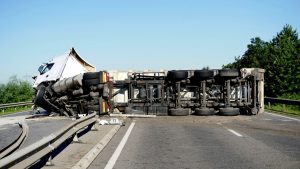North Dakota Truck Accident Investigations: What Happens After a Crash?
 North Dakota’s highways rumble with eighteen‑wheelers hauling grain, crude, and construction gear. Most loads arrive without incident. Yet one careless moment can scatter metal across the roadway and turn a routine drive into a medical emergency. Knowing how to prove fault after a wreck helps you protect your future.
North Dakota’s highways rumble with eighteen‑wheelers hauling grain, crude, and construction gear. Most loads arrive without incident. Yet one careless moment can scatter metal across the roadway and turn a routine drive into a medical emergency. Knowing how to prove fault after a wreck helps you protect your future.
What to do after a truck accident
The following actions are important regardless of whether you are aware that you’ve been injured:
- Seek medical attention even if you feel “okay.” Adrenaline masks pain, and an emergency‑room visit ties those injuries to the collision.
- Call 911 and wait for law enforcement. The official crash report anchors every later investigation.
- Use your phone to photograph vehicles, cargo spills, skid marks, weather conditions, and visible injuries. If you cannot move safely, ask a witness to help.
- Exchange insurance and employer information with the truck driver, but avoid discussing blame. Anything you say can resurface in a claims file.
- Identify witnesses by name and number. A short video statement while memories are fresh often proves priceless.
- Notify your insurer within 24 hours, but decline recorded statements from the trucking company’s insurance carrier until you have legal advice.
Contact an experienced North Dakota truck accident lawyer quickly. Preserving electronic data from the tractor, trailer, and dispatcher usually requires a written evidence spoliation letter sent within days.
The truck accident investigation process
Once first responders clear traffic, multiple parties launch parallel inquiries. Police look for criminal violations. Insurers and trucking companies hunt for reasons to pay less. Your lawyer’s role is different—they collect every scrap of evidence that might show negligence or maximize compensation.
Officers map the scene, mark impact points, measure skid distances, and record where each vehicle came to rest. Dash cam video and sometimes drone footage lock those measurements in place.
Tow operators move the rigs to secure lots. Detailed chain of custody logs prevent defense experts from claiming that key portions were altered.
Your legal team may dispatch an accident‑reconstruction engineer. Laser scanners and event‑data downloads become a 3‑D model that a jury can walk through in Minot, Fargo, or Bismarck.
Investigating the truck driver
Commercial drivers hold special licenses and must obey strict federal and state rules. Investigators should pull the driver’s electronic logging device to confirm hours‑of‑service compliance.
Fuel receipts, toll tickets, and GPS pings often expose hidden mileage that violates rest requirements. This can help prove negligence.
A post‑crash drug and alcohol screening is mandatory. Driver qualification files reveal prior wrecks, safety citations, and whether the company ignored red flags when it hired the driver.
Looking at every vehicle on the road
North Dakota applies a modified comparative fault rule. Since defense lawyers will search for anything that shifts blame to you, investigators will review your driver’s license status, vehicle maintenance records, phone usage, and speed data from your airbag module.
Offering your own evidence early helps stop distorted interpretations before they fester.
Investigating the trucking company
Even a careful driver cannot overcome a reckless employer. Federal regulations require carriers to inspect, maintain, and repair their fleets regularly.
Maintenance logs, brake inspection sheets, and tire invoices can expose corner-cutting practices.
Dispatch records show whether supervisors pressured the driver to meet impossible delivery windows. Messages saying “Just keep rolling” can be gold at settlement talks.
Training manuals–or proof that no training occurred–demonstrate whether safety was a real priority or just a slogan.
When federal regulators step in
Crashes involving hazardous cargo, multiple fatalities, or glaring violations may trigger an inquiry by the Federal Motor Carrier Safety Administration. FMCSA agents can subpoena records nationwide, interview employees under oath, and levy heavy fines.
Findings from a federal docket arrive stamped with governmental authority and often strengthen your civil claim.
Why the investigation matters for your claim
Juries demand proof, not speculation. Black‑box data pinpoints speed and braking within hundredths of a second. Cell‑tower metadata shows whether the driver was scrolling social media. Brake‑pad thickness measurements reveal poor maintenance. Each fact can mean additional dollars for medical care, lost income, and long‑term support.
Trucking companies know this. Some send rapid‑response teams to a crash site before the wreckage cools. Hiring your own team quickly levels the playing field.
Common evidence that can make or break a case
The following evidence can make or break your claim:
- Dash‑cam or traffic‑cam footage capturing the collision.
- Electronic control module data from tractor and trailer.
- Electronic logging device and event data recorder records plus paper backup logs.
- Dispatch instructions, routing software screenshots and load manifests.
- Maintenance records detailing brake adjustments and tire changes.
- Post‑accident drug and alcohol test results.
- Witness statements and 911 audio recordings.
Close‑up photographs of underride damage, cargo spills and guardrail gouges.
How long does the investigation take?
No two truck accidents are alike, so timelines vary. A simple rear‑end crash on Highway 2 might be resolved in weeks, while a multi‑vehicle pile‑up involving out‑of‑state carriers can keep investigators busy for months.
In North Dakota, the police typically release accident reports within a few days. Black‑box downloads and toxicology screens often take longer. Keep in mind that insurance adjusters may withhold settlement offers until they see every report.
Meanwhile, once you file a lawsuit your attorney can push the process forward by using subpoenas, depositions, and written discovery. These tools compel trucking companies to hand over records rather than dragging their feet.
Act quickly to preserve evidence
Physical evidence fades fast. Skid marks wash away by the next rainstorm, and electronic control modules can be overwritten in as little as thirty operating hours.
A formal evidence spoliation letter puts the carrier on notice that destroying or altering evidence will trigger penalties in court. Sending that letter early is one of the most effective steps you can take to safeguard your claim.
Ready to protect your future?
Larson Law Injury & Accident Lawyers has spent more than forty years standing up for North Dakotans blindsided by careless truckers and penny‑pinching carriers. Founder Mark V. Larson is a Certified Civil Trial Specialist who is ready to go toe‑to‑toe with national insurers. Contact us today for a free consultation.

Mark Larson is a Certified Civil Trial Specialist and Certified Civil Pre-Trial Specialist focusing on personal injury, car accidents, wrongful death, and oil field claims. Since 1979, Larson Law has served the injured throughout North Dakota. Read more about Mark V. Larson.
